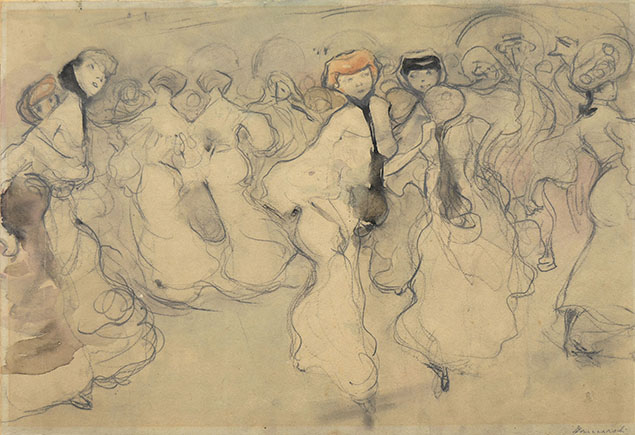(Piove di Sacco PD 1873 - Venice 1911)
WOMEN DANCING
Black chalk and watercolour. Inscribed bottom right in pencil Fraccaroli (most likely the journalist Arnaldo Fraccaroli). 325 x 477 mm.
Valeri enrolled at the Venice Accademia di Belle Arti in 1895, moving the following year to that in Bologna. There, he would become a figure in the restless, dynamic life of the city, being a leading light in the Congrega dei Giambardi della Sega. As well as working in Venice, he would also work in Milan, for the most important magazines of the day In effect, Valeri was a sort of street artist – that is, he used pencil, charcoal, watercolour, tempera and oils to capture the restless life of the early twentieth century, depicting the habitués of cafés, theatres and the demimonde. However, he was also an artist whose work enjoyed critical success – as one can see from his inclusion in such important exhibitions as the Premio Francia in Bologna (which he won in 1898), at the International Exposition for the opening of the Sempione in Milan (1906) and at the Venice Biennale (1907); Ca’ Pesaro in the latter city would also host two one-man shows in 1909 and 1910. It was the huge success of the 1909 show that result in the Ca’ Pesaro secession – that is, the breakaway movement organized primarily by Nino Barbantini which would use the first Bevilacqua La Masa shows within the Museum of Ca’ Pesaro to challenge the critical establishment of the day and bring to the public eye such artists as Arturo Martini, Felice Casorati and Gino Rossi. Valeri’s own career would sadly come to a dramatic end at Ca’ Pesaro itself, when he fell from a window there in 1911.
